Last month in Cooper Hewitt Short Stories, we explored a world of textiles encapsulated in a generous gift to Cooper Union by J.P. Morgan. In January’s short story, written by Gail Davidson, former Curator and Head of Drawings, Prints & Graphic Design at Cooper Hewitt, the work of three important American artists come together to form the backbone of Cooper Hewitt’s collection of American drawings.
Margery Masinter, Trustee, Cooper Hewitt, Smithsonian Design Museum
Sue Shutte, Historian at Ringwood Manor
Matthew Kennedy, Publishing Associate, Cooper Hewitt, Smithsonian Design Museum
“Compelled the admiration of all”
In 1919, Eleanor Garnier Hewitt proudly announced in the Making of a Modern Museum, page 17:
As quickly as they can be acquired, leaves from the note and sketch books of artists of the last half of the 19th century, and of the present day, are being placed (on the walls of the corridors and staircases). Distinguished men, namely, Frederick [sic] E. Church, Winslow Homer, Robert Blum, many other Americans…are already represented. The first conception of numerous well-known pictures, perhaps jotted down merely on an envelop, box cover, or chance scrap of paper, are there to inspire and illuminate students and laymen.[i]
While Sarah & Eleanor Hewitt’s primary goal for the museum at Cooper Union was building a decorative arts collection, they were simultaneously acquiring American drawings for the use of students at Cooper Union’s Women’s Art School. As early as 1903 the Women’s Art School director Robert Swain Gifford requested the purchase of figure studies to hang in the life class initiating the development of one of the most notable collections of American nineteenth-century drawings in any public United States institution. With the initial help of an artists committee and the Museum Advisory Council, the Hewitt sisters were able to honor successive directors’ requests by acquiring gifts of figure drawings and later landscape drawings from artists and their descendants.[ii]
Charles Worthington Gould (1849–1931), a member of the Cooper Union Board and the Museum Advisory Council, and artist Eliot Candee Clark (1883–1980), his protégé, took on the American drawings project with phenomenal success. Eliot Clark came from a comfortable, socially connected New York family. A precocious artistic talent, he followed his father, Walter Clark, into the field of landscape painting. After a three-year walking tour of Europe with his father and his father’s friends, he returned in 1904 to New York where he established himself as a painter in the Van Dyke Studio Building at 939 Eighth Avenue. As a young artist, however, he had to supplement his income by teaching at the Art Student’s League (1912–14; 1919–22) and by teaching students privately.
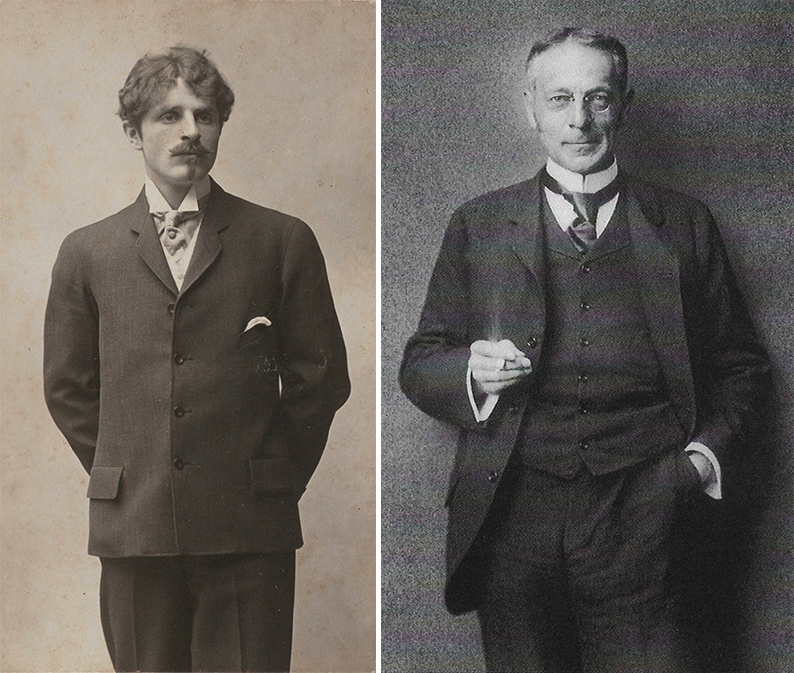
(left) Eliot Clark, ca. 1907, Eliot Clark Papers, Archives of American Art, Smithsonian Institution; (right) Charles W. Gould, n.d., photograph courtesy of the Metropolitan Museum of Art.
One of Clark’s students was Charles W. Gould. A retired lawyer, Gould had an art collection containing books, decorative arts objects, paintings, and drawings, including a sizeable collection of works by Louis Comfort Tiffany and by Winslow Homer. His Homer objects comprised one major oil painting, The Herring Net, twenty-two watercolors, and additional drawings. As a Homer collector, Gould was asked to join the committee planning the Metropolitan Museum of Art’s 1911 Homer Memorial Exhibition, to which he lent his painting (then called Banks Fisherman). He subsequently served as a Met board member from 1915 to 1930.[iii]
In the fall of 1912 Charles Gould invited Eliot Clark to accompany him on a sketching and painting trip to the Grand Canyon and Santa Barbara, California. A photograph from this trip shows Gould (fourth from the bottom) and Clark (sixth from the bottom) with others, riding down a winding trail at the Grand Canyon in October 1912. According to Clark’s second wife, Margaret Fowler Clark, Gould introduced Eliot Clark to the Hewitt sisters at Gould’s summer home in Tuxedo Park. The four parties could have discussed the museum’s goal of acquiring figure and landscape drawings at such a meeting.[iv]
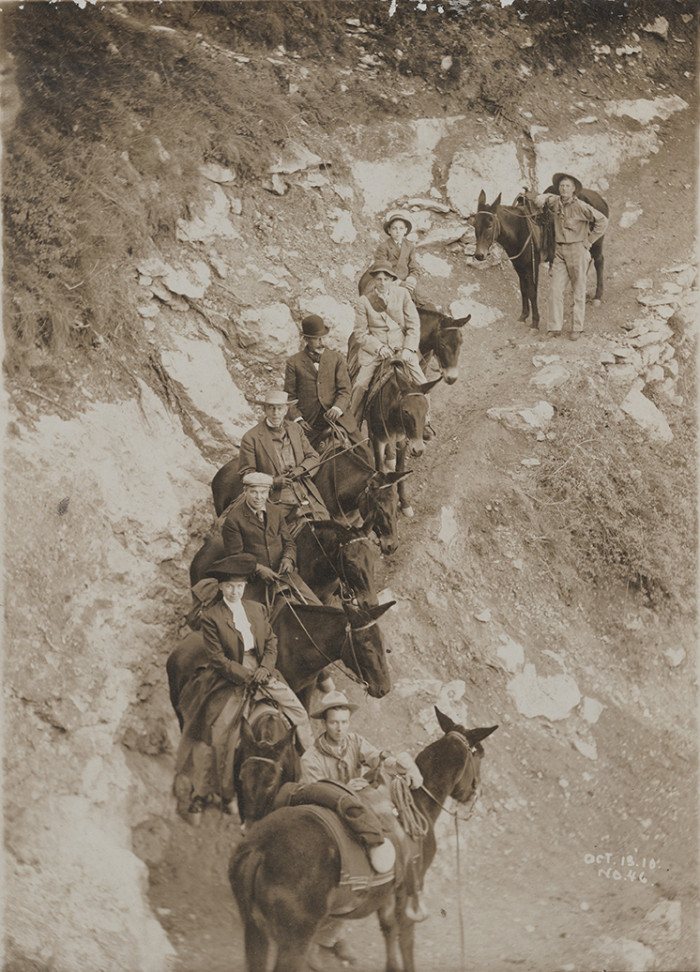
Eliot Clark, Charles W. Gould, and others riding down a trail at the Grand Canyon, October 1912, Eliot Clark Papers.
As an important lender to the Homer memorial exhibition, Gould could have met Charles Savage Homer Jr., Winslow Homer’s brother, at the Metropolitan Museum.[v] It was perhaps at this time that Gould could have suggested to Charles, who was left with the contents of Winslow’s studio after selling off the artist’s large paintings, watercolors, and drawings, that he could complete the dispersal by donating the studio’s contents to the Cooper Union Museum for the benefit of Cooper Union’s Women’s Art School students. In 1912, Charles gifted over 200 Homer drawings and one oil sketch to the Cooper Union Museum. That Gould could have been the liaison between Charles Homer and Cooper Union is suggested by a November 17, 1916 letter he wrote to Eleanor Hewitt in which he reported that Charles and his wife were in New York at the moment and that it might be an occasion to send Charles a note of condolence for the loss of his brother Arthur (who died over the past summer) and to thank him personally for his past gifts to the museum and for his intention of donating the Homer paintings remaining in their possession.[vi] Between 1915 and 1918, Charles and Mattie Homer gave two drawings and twenty-two oil paintings to Cooper Union. In a similar spirit of generosity, Charles Gould added to the museum’s Homer treasures by donating from his own collection, one graphite drawing and a large black chalk study for The Herring Net painting, which he would later sell through Knoedler Gallery to Martin Reyerson of Chicago along with his twenty-two Homer watercolors.[vii]
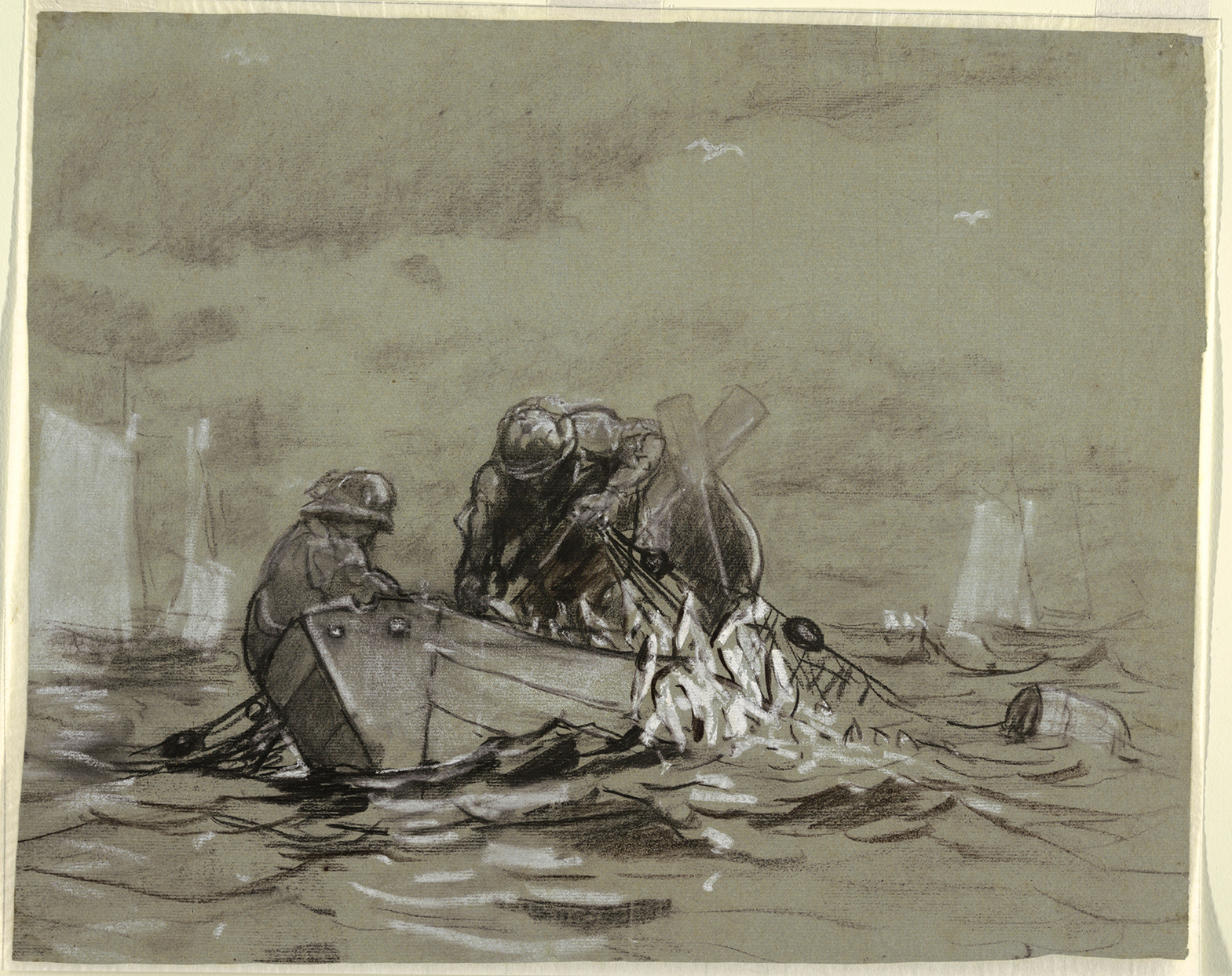
Winslow Homer (American, 1836–1910); Drawing, Study for “The Herring Net,” 1884–1885; Black, brown, and white chalk on green paper; 42.3 x 52.3 cm (16 5/8 x 20 5/8 inches); Gift of Charles W. Gould, 1916-15-2
The successful Homer acquisition project seems to have inspired Clark and Gould to continue their quest on behalf of Cooper Union. After learning that a large number of Frederic Church paintings and drawings remained at Olana, the Church family’s country home, Eliot Clark wrote to the painter’s son, Louis Palmer Church, to ask if he would be interested in giving some of these works to the Cooper Union Museum. In reply, Church invited Clark to visit him and his wife at Olana.
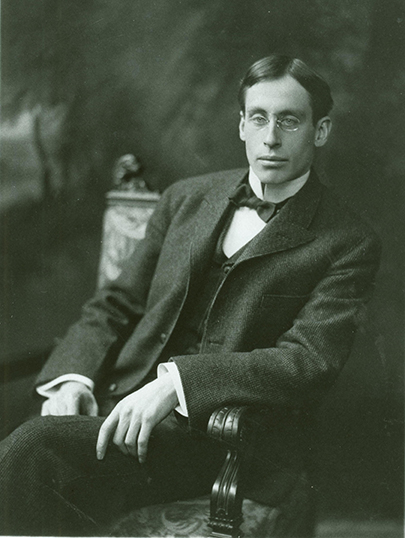
Unidentified photographer, Louis Palmer Church, undated, platinum print, 8 3/8 x 6 5/16 in., OL.1982.1369, Collection Olana State Historic Site, NYS Office of Parks, Recreation and Historic Preservation
In June 1916, Clark apprised Eleanor Hewitt of his endeavors to persuade Louis Church to make this gift and he hoped to “report favorably on this within a short time.” With the summer holidays, Clark was able to pursue the project five months later. On November 25 and 26, 1916, as documented in the Olana guest book, Clark stayed with Louis and Sally Church, looking over the oil sketches and graphite drawings and making some preliminary selections. He returned on December 9 with Charles Gould for a two-day visit. Together they made informed and judicious choices of works from the 1850s and 1860s when Church’s skill was most dazzling, including views of South America, Niagara Falls, Jamaica, and the Middle East, along with scenes of Mount Katahdin in the 1870s and early 1880s. The crate of artwork was probably trucked back to New York and stored in a warehouse for four months, during which time Clark assembled the sketches in groups by location, cleaned and varnished those he felt needed conservation work, dismembered sketchbooks, and selected works to be exhibited on the museum walls and displayed in vitrines.[viii] A selection of the material was displayed at the Hewitts’ Lexington Avenue home for a Museum Council reception; this occasion was the first time that Sarah and Eleanor viewed the Church works. Frederic Delano Weekes—secretary to the Council—reported the sketches and studies were “of such beauty that they compelled the admiration of all.” Following the reception, the Hewitt sisters acknowledged the donation in the letter to Louis and Sally Church, inviting them to lunch and a visit to the museum when they next came to New York. We know the couple visited the museum from a letter Clark sent to Eleanor thanking her for hosting the Louis and Sally Church at the museum.
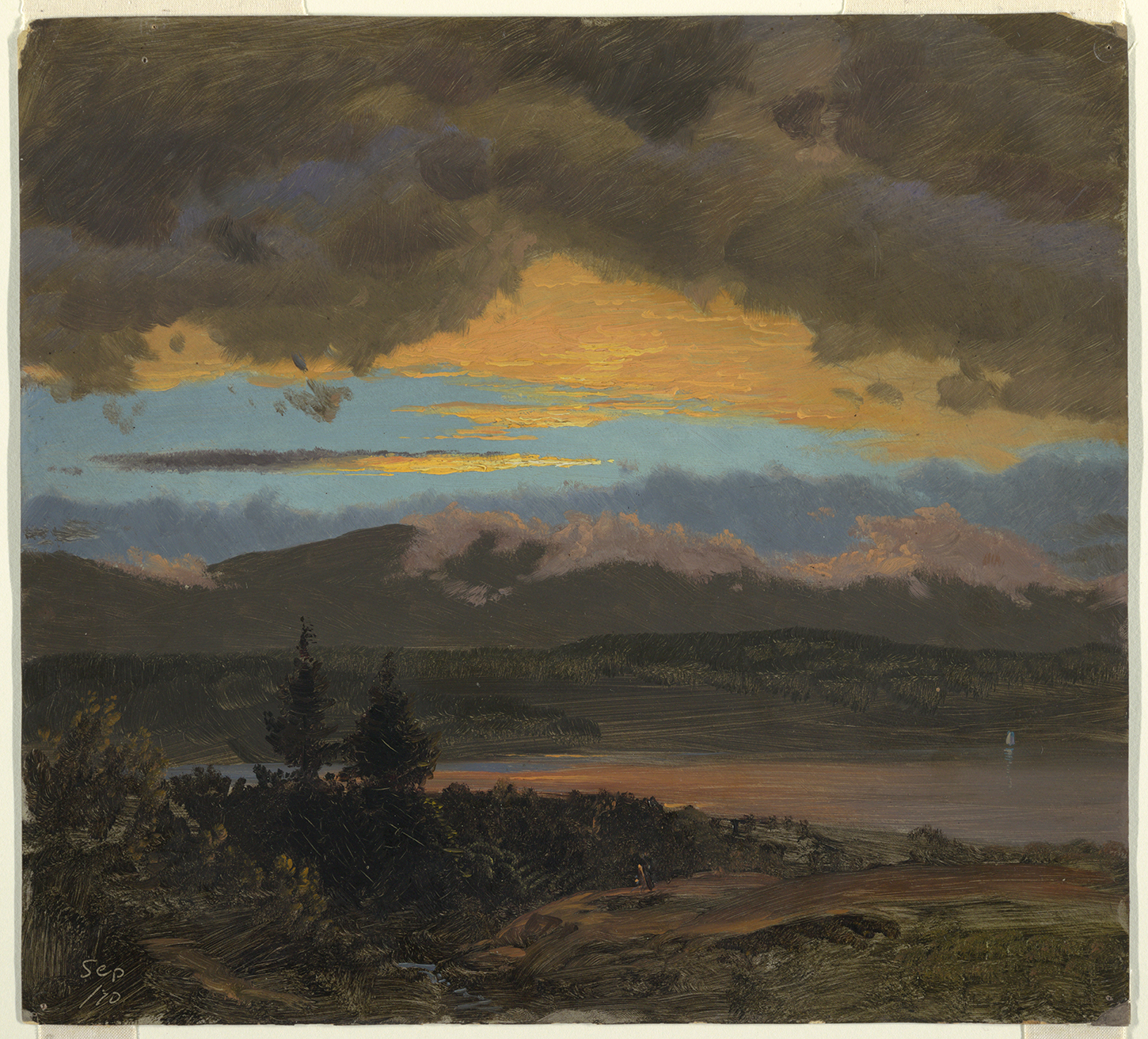
Frederic Edwin Church (American, 1826–1900); Drawing, Sunset across the Hudson Valley, New York, September 1870; Brush and oil paint, graphite on thin cream paperboard; 32.2 x 35.2 cm (12 11/16 x 13 7/8 in.); Gift of Louis P. Church, 1917-4-582-c
While the Church project was in process, Eliot Clark was already moving on to another gift of American drawings. Clark reported to Gould on June 23, 1916, that he had received a letter from Thomas Moran saying that he was sympathetic to the idea of donating material to the Cooper Union Museum, and that after making the selections he and Clark would review the works together. Clark ended his letter, “I think that promises well, and I know you will be as much pleased as I am.” Gould responded hastily the next day that he was “overjoyed” with Moran’s positive response, was waiting “with impatience” to see the works, and that Clark should let him know immediately. The eighty-nine watercolor, black wash, graphite drawings and prints that were gifted to the museum included scenes of the Grand Canyon, Yellowstone, Yosemite, the Bad Lands, and other images of South Utah, Colorado, Wyoming, and Mexico. Clark and Gould were very proud of this series of art works by “the Dean of American painting.” In 1936—when the Metropolitan Museum of Art and the National Gallery of Art were preparing centennial exhibitions of Thomas Moran’s work—Clark wrote to Mary Gibson, curator of drawings at the Cooper Union Museum, that Cooper Union should install simultaneously an exhibition of its Moran collection, which apparently never materialized.
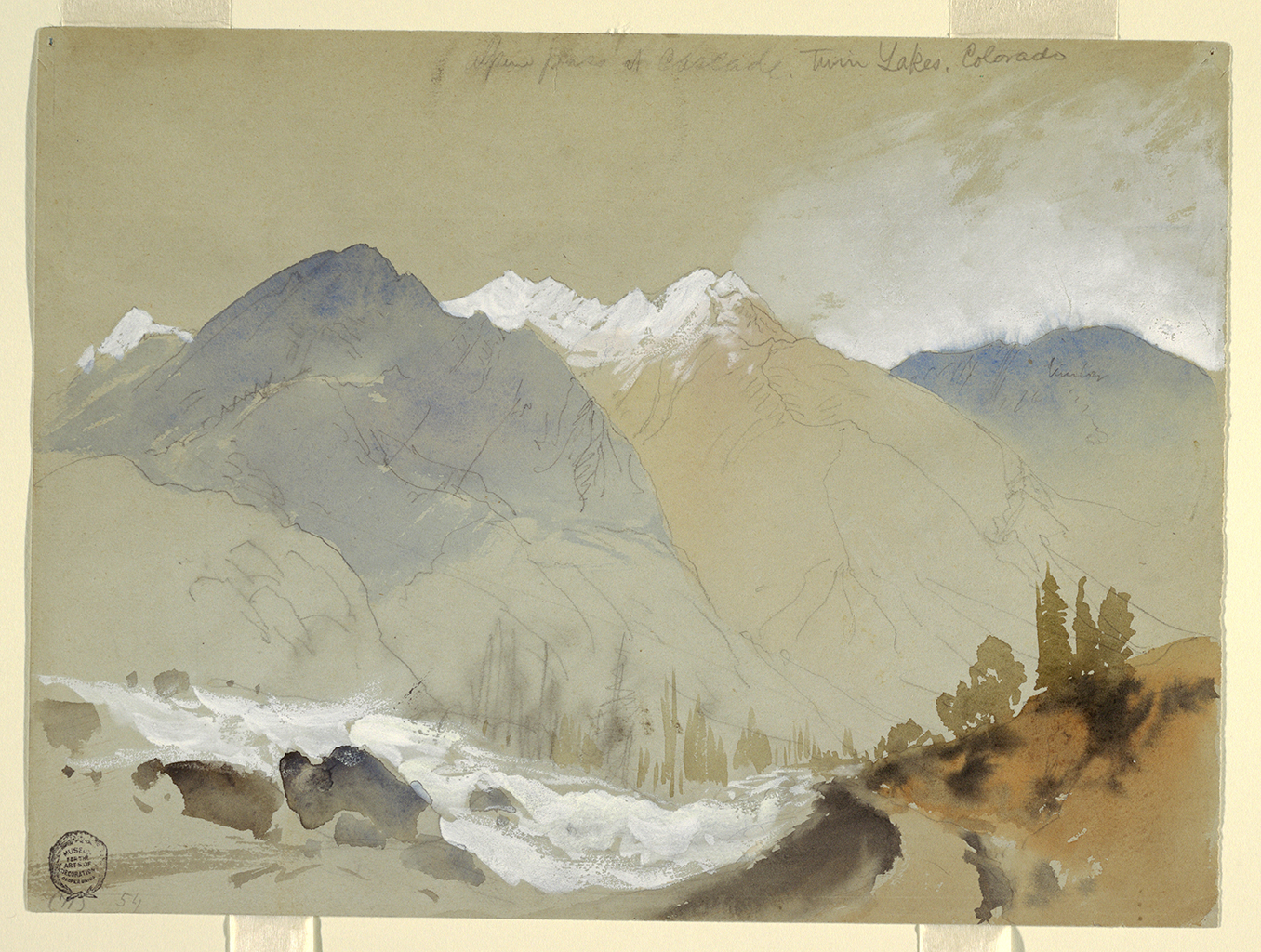
Thomas Moran (American, b. Britain, 1837–1926); Drawing, Alpine Pass at Cascade, Twin Lakes, Colorado, 1892; Brush and watercolor, white gouache, graphite on gray wove paper; 23.8 x 32 cm (9 3/8 x 12 5/8 in.); Gift of Thomas Moran, 1917-17-71
While Charles Gould moved permanently to Montecito, California in 1930, Clark pursued additional Cooper Union acquisitions during the 1920s and 1930s with no results until the 1950s when, as secretary and then president of the National Academy of Design, he could steer more material to the Cooper Union Museum. From 1912 to 1917 the perfect match of need and opportunity allowed the Cooper Union Museum to acquire a major collection of American nineteenth-century works by three of the country’s most famous artists, Winslow Homer, Frederic E. Church, and Thomas Moran, of which Cooper Hewitt, Smithsonian Design Museum continues to be very proud.
Footnotes
[i] Eleanor G. Hewitt, The Making of a Modern Museum (New York: printed privately, 1919), 17.
[ii] Unless noted otherwise, some of the material in this discussion is treated in greater depth in Gail S. Davidson, “Eliot Clark and the American Drawings Collection at Cooper-Hewitt, National Design Museum,” Archives of American Art Journal, vol. 34, no. 4 (1994), 2–15.
[iii] My thanks to Melissa Bowling, Associate Archivist, Metropolitan Museum Archives for her assistance reviewing the 1911 Homer exhibition files.
[iv] Between 1908 and 1918, Charles Gould was a guest at the Hewitt’s summer home, Ringwood Manor, six times (once with Eliot Clark), and Clark visited alone for one more visit. However, it is likely that most of their meetings occurred at the Hewitt family’s 9 Lexington Avenue home, meetings for which no records have yet been found. My thanks to Susan Schutte, Archivist, Ringwood Manor for her help with the Ringwood Manor Guest Books.
[v] While Charles Gould was invited to attend the first meeting of the Committee for the Arrangements of the Memorial Exhibition of Works by the Late Winslow Homer, he was in California and did not attend the meeting. Both Charles Savage Homer Jr. and George A. Hearn, Cooper Union Board Member and founder of the Cooper Union Museum Advisory Council, did attend in which case Hearn might have acted as the agent for Cooper Union. See “Committee of Arrangements for the Memorial Exhibition of Works by the Late Winslow Homer,” November 1910, Loan Exhibition-1911-Winslow Homer Paintings-Committee, 1910, Office of the Secretary Records, The Metropolitan Museum Archives, New York. While a November 29, 1910 meeting seems to have been scheduled, no records of this meeting have as yet been located.
[vi] See Record Unit 267 Cooper Hewitt Museum Records, 1881, 1895–1976, Box 33, Museum Advisory Council Folders, 1907–1924, Smithsonian Institution Archives, Washington, DC. Thank you to Ellen Alers and Tad Bennicoff, Archivists, at the Smithsonian Institution Archives, for their assistance viewing the Cooper Hewitt files on deposit at the Smithsonian Institution Archives in Washington, DC.
[vii] See Art Institute of Chicago, Registrar’s Records, Martin A. Ryerson.
[viii] See Record Unit 267 Cooper Hewitt Museum Records, 1881, 1895–1976, Box 6, Eliot Clark Folder, Smithsonian Institution Archives, Washington DC.

One thought on “Cooper Hewitt Short Stories: American Drawings Story”
Jeriel Comstock on December 16, 2019 at 7:03 pm
I have a painting by F Church Sunset on Hudson who can I contact for information.